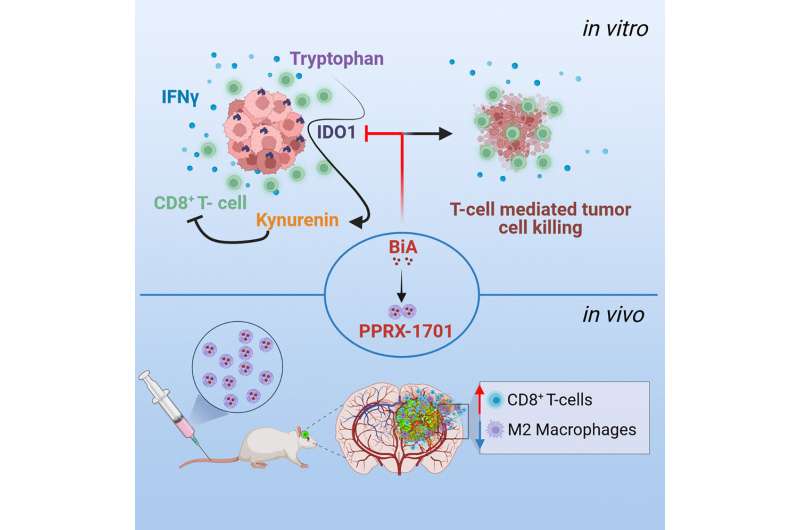This article has been reviewed according to Science X's editorial process and policies. Editors have highlighted the following attributes while ensuring the content's credibility:
fact-checked
peer-reviewed publication
trusted source
proofread
Drug form of traditional Chinese medicine compound found to improve survival of mice with brain tumors

A new study shows how a drug made from a natural compound used in traditional Chinese medicine works against malignant brain tumors in mice, creating a promising avenue of research for glioblastoma treatment.
In the study, published in Cell Reports Medicine, researchers showed how a formulation of the compound, called indirubin, improved the survival of mice with malignant brain tumors. They also tested a new formulation that was easier to administer, taking the potential pharmaceutical approach one step closer to clinical trials with human participants.
"The interesting thing about this drug is that it targets a number of important hallmarks of the disease," said Sean Lawler, lead author and a Brown University associate professor of pathology and laboratory medicine. "That's appealing because this type of cancer keeps finding ways around individual mechanisms of attack. So if we use multiple mechanisms of attack at once, perhaps that will be more successful."
The research team included scientists from Brown's Legorreta Cancer Center and School of Engineering; the department of neurosurgery at Brigham and Women's Hospital/Harvard Medical School; and Phosphorex, Inc./Cytodigm, Inc.
Glioblastoma is the most common and aggressive type of brain cancer. The standard of care is chemotherapy, radiation and surgery, which may improve symptoms but don't cure or stop the cancer.
Indirubin is a natural product present in indigo plants and a constituent of the traditional Chinese medicine Dang Gui Long Hui Wan, which has been used in the treatment of chronic myelogenous leukemia, according to the researchers. Derivatives of the indirubin have shown potential for the treatment of cancer through a range of mechanisms.
Research published 10 years ago by Lawler and others showed that indirubin slowed the growth of glioblastoma tumors in mice. However, he said, the researchers weren't able to explain why. What's more, the modified drug wasn't very easy to work with, making it challenging for scientists to test dosage levels or efficiently deliver it to the tumor.
As the scientists continued to research the compound, they were contacted by the Massachusetts-based biomedical company Phosphorex, which develops technology to improve pharmaceutical formulations. Phosphorex had patented a formulation of indirubin, called 6'-bromoindirubin acetoxime (BiA), which made the compound easier to use as an injectable cancer treatment.
The researchers tested the nanoparticle formulation of BiA on glioblastoma tumors in mice, focusing on how the drug would affect the immune system.
Not only did BiA slow the growth and proliferation of tumor cells (confirming the results of previous studies), but it also improved survival via effects on important immunotherapeutic targets.
"The drug impacted the immune system in these mouse experiments in a way that we think could enhance clinical immunotherapy in humans," explained Lawler, whose lab therapeutic approaches for the treatment of brain cancer.
The researchers will continue to test the drug to see how it interacts with chemotherapy and radiation, with the aim of developing clinical trials for participants with glioblastoma. While scientists have been studying glioblastoma for decades, Lawler said that there haven't been many significant therapeutic breakthroughs, until now.
"Over the past 20 years or so, there haven't been many findings of note that have really impacted survival in a meaningful way, so we are very eagerly looking for new approaches," Lawler said. "This research offers a new approach, and that's why we're so excited about it."
More information: Mykola Zdioruk et al, PPRX-1701, a nanoparticle formulation of 6′-bromoindirubin acetoxime, improves delivery and shows efficacy in preclinical GBM models, Cell Reports Medicine (2023). DOI: 10.1016/j.xcrm.2023.101019




















